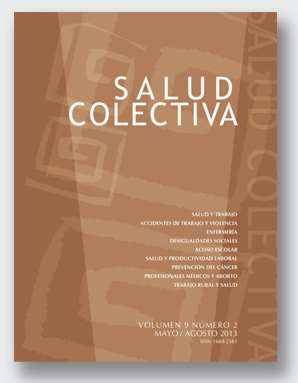Fatal work-related injuries and interpersonal violence in Brazil, 2000-2010
Published:
5 August 2013

Abstract
In this study, we present estimates of the proportionate mortality of work injuries involving interpersonal violence in Brazil from 2000 to 2010. Data come from the Mortality Information System based on death certificates from the Health Ministry, which in Brazil include a field for recording work-related injuries that must be completed in all deaths due to external causes. There were 1,368,732 deaths due to external causes, 31,576 (2.3%) due to work injuries, and only 226 (0.02%) due to work injuries involving interpersonal violence. Nearly 80% of the death certificates did not include data in the work injury field. Most cases occurred among males (94.3%) 25-34 years of age with less than high school education in the Southeast and Northeast country regions, primarily in the manufacturing and agricultural industries. The majority of cases were caused by firearms, followed by sharp instruments, with a relative increase in this last category during the study period. Findings suggest underrecording of diagnoses that recognize the work-related nature of the death. Better training on death certificate completion and studies to quantify the underrecording of work injuries and work injuries involving interpersonal violence are needed.
Keywords: Accidents, Occupational, Occupational Accidents Registry, Violence, Aggression, Brazil.










